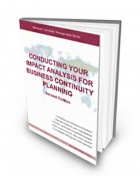Critical Business Functions (CBF)

2. Those activities which have to be performed to deliver the key products and services which enable an organization to meet its most important and time-sensitive objectives.
(Source: AE/HSC/NCEMA 7000:2012)

3. Critical functions are those services provided to third parties, including customers, that are essential for the BSFI’s viability or the broader economy's functioning.
(Source: Bangko Sentral ng Pilipinas (BSP) Guidelines on Operational Resilience)
4. Business activities and processes that shall not be disrupted such that they impact the ability of the organization to achieve its Minimum Business Continuity Objective.
(Source: Singapore Standard 540 - SS 540:2008)
5. Business activities or information that could not be interrupted or unavailable for several business days without significantly jeopardizing operation of the organization.
(Source: Disaster Recovery Institute International / Disaster Recovery Journal - DRII/DRJ)
6. Business activity or process that cannot be interrupted or unavailable for several business days without having a significant negative impact on the organization.
(Source: ASIS International - ASIS International)
7. Key business processes are those processes essential to delivery of outputs and achievement of business objectives.(Australian National Audit office,2000).
(Source: NFPA 1600 Standard on Disaster/Emergency Management and Business Continuity Programs, NFPA 1600:2007)
8. Vital business functions without which an organization cannot long operate.If a critical business function is non-operational,the organization could suffer serious legal,financial,goodwill or other serious losses or penalties.
(Source: Australia. A Practitioner's Guide to Business Continuity Management HB292 - 2006 )
9. A group of business activities undertaken by an organization in pursuit of a common goal.Typical business processes include receiving orders,marketing services,selling products,delivering services,distributing products,invoicing for services,accounting for money received.A business process is usually depends upon several business functions for support,e.g.,IT,personnel and accommodation.A business process rarely operates in isolation,i.e.,other business processes will depend on it and it will depend on other processes.
(Source: OGC, Information Technology Infrastructure Library (ITIL) v3)
10. Vital functions without which an organization will either not survive or will lose the capability to effectively achieve its critical objectives.
NOTES:
- A critical business function can comprise a single process or several processes contributing to
a final definable output.
- A critical business function may involve a single structural unit of the organization, or may
involve activities across several structural units.
- A single structural unit may have responsibility for one or more critical business functions.
(Source: AS/NZS 5050.1 Australian and New Zealand Standards for business continuity management.
Part 1: Business continuity management system specification)
11. Vital functions without which an organization cannot survive and/or effectively achieve its critical objectives.
NOTES:
- A critical business function can comprise a single process or several processes contributing to
a final definable output.
- A critical business function may involve a single structural unit of the organization, or may
involve activities across several structural units.
- A single structural unit may have responsibility for one or more critical business functions.
(Source: AS/NZS 5050.2 Australian and New Zealand Standards for business continuity management.
Part 2: Business continuity management practice standard)



